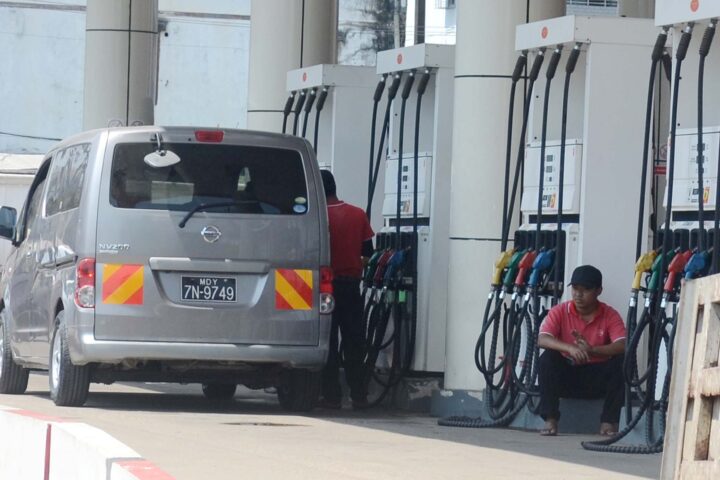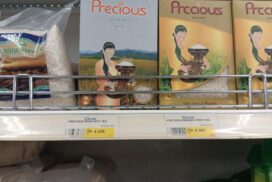Fuel prices in the market have increased gradually, according to the source.
On 13 December, the prices stood at K1,795 per litre for 92 Octane, K1,885 for 95 Octane, K2,130 for diesel and K2,205 for premium diesel in the Yangon market.
Then, the market showed a gradual price rise and it was K1,970 per litre of 92 Octane, K2,055 per litre of 95 Octane, K2,300 per litre of diesel and K2,380 per litre of premium diesel on 24 December.
Therefore, the prices of fuel are increasing by about K170 per litre within two weeks.
The prices are on the rise again as the prices of Singapore-based Mean of Platts Singapore (MOPS) become higher, according to the Supervisory Committee on Import, Storage and Distribution of Fuel Oil.
By the end of August, the fuel prices reached their highest at K2,605 per litre for 92 Octane, K2,670 for 95 Octane, K3,245 for diesel and K3,330 for premium diesel.
The committee conducts measures to ensure fuel shortages and price stability. Moreover, the Petroleum Products Supervision and Inspection Department released the daily fuel reference prices under the guidance of the Supervisory Committee on Import, Storage and Distribution of Fuel Oil.
The reference rate in Yangon Region is set on the MOPS’ price assessment, shipping cost, premium insurance, tax, other general cost and reasonable profit rate. The rates for regions and states are evaluated after adding the transport costs and the retail reference rates are daily covered in the state-run newspapers and posted on the media and official website and Facebook page of the department daily starting from 4 May.
Therefore, the fuel oil stations that sell oil at higher prices than the reference prices are scrutinized and taken action under Petroleum and Petroleum Products Law 2017.
As 90 per cent of fuel oil in Myanmar is imported, while the remaining 10 per cent is produced locally, the oil prices in the market are changing depending on the international market prices.
The government maintains the situation to be stable prices that benefit the oil importers, sellers and consumers and distributes at the fairer prices compared to the prices of regional countries.
Some countries levied higher tax rates and hiked oil prices than Myanmar. However, Malaysia’s oil sector receives government subsidies and the prices are about 60 per cent cheaper than that of Myanmar. Every country lays down different patterns of policy to fix the oil prices. Myanmar also poses only a lower tax rate on fuel oil and strives for energy consumers to buy the oil at a cheaper rate.—NN/KTZH
Fuel prices on uptick trends
- December 26, 2022
- 711














